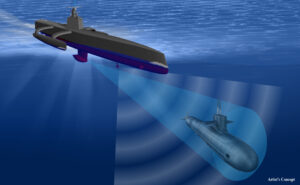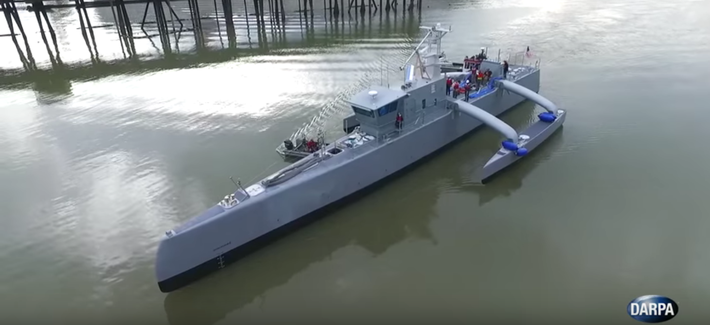Despite tight budgets at the Pentagon, the Navy wants to speed-up several shipbuilding programs —
,
, and
— and Congress seems inclined to give them the money. That’s testimony both to the perennial political popularity of shipbuilding, which employs a lot of voters, and to the rising strategic anxiety over the
, which is driving the Navy to reassess
and
it needs.
Accelerating Amphibs
Consider amphibious warships, doubly beloved on Capitol Hill because they’re (1) ships and (2) they carry
. Assistant Secretary
, the Navy’s acquisition chief, told the Senate seapower subcommittee that the next class of amphibs, provisionally called L(X)R, could be accelerated by a year, which would move contract award from 2020 to 2019 —
if the Navy gets additional funding. (2018 would be a bridge too far, Stackley told reporters after the hearing yesterday afternoon).
Congress already upped the Navy’s 2016 budget by $279 million to accelerate L(X)R one year, from 2021 to 2020. That funding went for advance procurement of long lead-time materials. But adding even more AP funding for 2017 wouldn’t speed up the ship significantly, Stackley said: That approach is hitting diminishing returns. But the Navy
could speed up the design process, a relatively inexpensive proposition, and thus cut a year out, getting to contract award in 2019.
The problem is the Navy can’t afford the actual ship that early. Stackley didn’t outright ask for another congressional plus-up, but the wheels are clearly turning in legislators’ heads. The assistant secretary did helpfully suggest spreading the additional cost over more than one year, a mechanism known as incremental funding.
“The challenge becomes the budget,” Stackley said. “Without pulling the whole ship to the left” (or rather, the whole
cost of the ship) “what additional funding with incremental funding authority would allow acceleration without breaking our budget?”
Given that Congress has already added a more expensive amphib to the budget,
above the 11 the Navy had requested, the odds of getting funding for an earlier L(X)R look good. In fact, L(X)R will be a scaled-down version of the LPD design.
The Navy will have a clearer picture of what the shipyards can handle this summer, around June, once it awards contracts for the much larger LHD-8 amphib — essentially a small aircraft carrier that can carry Marines — and the T-AO(X) fleet oilers. The two yards competing for these ships are the same ones doing design work on L(X)R: General Dynamics’ NASSCO in California and Huntington-Ingalls’ Industries’ Ingalls in Mississippi.
A Third Destroyer In 2016?
Congress also added funding in 2016 for an additional
— but not quite enough to complete it. The Navy has asked for the remaining money, $433 million, in its
. (It went on the wishlist because
was already finished by the time Congress added the destroyer to 2016). If Congress grants the money, Stackley told reporters after the hearing, the Navy would buy three destroyers in 2016 instead of the usual two. HII’s Ingalls in Mississippi and GD’s Bath Iron Works, in Maine, are the yards that build destroyers.
But there’s a complication that has at least one senator worried: one of the 2016 destroyers will be the first of an upgraded “Flight III” design, built around a complex and powerful new Air & Missile Defense Radar. (Shipyards are currently building Flight IIA). Will AMDR be ready in time? asked Sen. Mazie Hirono, the seapower subcommittee’s ranking Democrat.
Absolutely, Stackley assured her. A production-representative radar is already headed into testing, AMDR has passed its Critical Design Review, and what remains is finalizing the integration of the radar into the vessel, which will involve a separate CDR for the whole ship in November. The new design is meant to
: The first ship entered service in 1991, but the Navy doesn’t plan to retire the last one until 2072.
Squeezing In Submarines
So the odds are good for that third destroyer in 2016 and the first L(X)R in 2019. That is not true for the submarine force’s future. The Navy’s top priority — above every other ship — is replacing the aging
Ohio-class nuclear missile sub, but the
of the Ohio Replacement Program threatens to drown out other shipbuilding programs, particularly the smaller
Virginia-class attack submarines.
Currently, the Navy has more than the 48 attack subs it considers the minimum necessary. But as
Los Angeles boats from the Reagan buildup retire,
, even as the Chinese underwater armada grows. The Navy’s been building two
Virginias a year since 2011, but that’s still not enough to keep up with
Los Angeles retirements — and production will drop to one
Virginia in years the Navy also has to afford an Ohio Replacement. The first such year is 2021, the next 2024.
“We’re working this as a top priority in our 2018 budget build, to be able to come back and fill in that 2021 (
Virginia-class) submarine,” Stackley said. In terms of the Navy’s options to remedy the attack sub shortfall, he said, “that boat is the first and best mitigation effort we can have.”
The Navy and the shipyards that build subs —
— have thoroughly studied the demands and carved out a division of labor.
one Ohio Replacement and two
Virginias in the same year, Stackley said, though both new facilities and
will require careful management. The problem is finding the funds.
Legislators were quick to take the hint. “So,” said subcommittee chairman Roger Wicker, “there’s not a capacity problem. It’s just a financing problem.” Now we await word from the appropriation committees, they who giveth the money.








